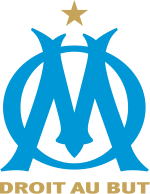Since the start of the season, I have been attracted to Olympique Marseille for many reasons. One of those reasons is Jorge Sampaoli’s style of play, and his intensity, which is visible in every game he manages, constantly pacing up and down his touchline nomadically. The other reason is the club's passionate fanbase. Listening to the Aux Armes ring around the Stade Velodrome is really something to marvel at, something that will surely give you goosebumps.
The city of Marseille was founded as Massalia and inhabited around 600BC by The Greeks. Due to its location, the city naturally has The Grand port maritime de Marseille, its own port that was and is used for trading purposes, making it one was the main sources of income for The Marseillais
The southern city is traditionally multicultural which links back to its location and accessibility. A city founded by the Greeks and inhabited by the French, Italians, Armenians, Spanish, Turks, Comorians, Arabians, Jewish, North and West Africans, makes it a great home for cultural prosperity.
Marseille is a very different city in comparison with other main European cities, one that almost feels that it belongs to the wrong part of the world, especially in terms of attitude and footballing teams.
Over their 122 year history, Olympique Marseille has gone through many cycles which include relegations, triumphs, political turmoil and rebuilds. Those being only a few of the words that make this club so fascinating.
Being such an intense city, it is almost impossible to disassociate the club with chaos, which is not particularly seen negatively as they thrive under it. Looking back into their recent history there are two examples of this in Marcelo Bielsa and André Villas-Boas.
In the 2014/15 season, Marcelo Bielsa led his team to a 4th place finish which was considered successful, given the quality of the opposition. Andre Villas-Boas during the 19/20 campaign had his Marseille six points clear of third-place before the season was cancelled due to the global pandemic. From afar both managers seem to be intense characters, seen by the statements given by Villas-Boas shortly before his departure and the fact that Bielsa left after one game at the start of the 15/16 season, due to contractual issues.
Marseille currently sit in third place after thirteen league games and the team has seemingly assimilated to Sampaoli’s style of play. The team typically sets up in a formation that can only really be described as a 3-2-4-1.
This line up consists of a back three from right to left of William Saliba, Leonardo Balerdi and Luan Peres. Directly in front of them you have Valentine Rongier and Boubacar Kamara, then two wide players, with Cengiz Ünder holding width on the right and Konrad De La Fuente doing likewise on the left. Gerson and Guendouzi mainly operate in the half-spaces and Dimitri Payet is given a free role as a centre-forward, where he tends to drift.
Sampaoli's side looks to create as much space as possible, especially for the attacking midfielders and wide players, which is achieved in a multitude of ways. The main way being long passes from the centre-backs and outnumbering their opponents in wide areas, creating space for crossing opportunities or 2 v 1s.
Rather than being the last line of defence, the defence is the first line of attack in this system, clearly visible through William Saliba and Luan Peres. Saliba acts like a full-back when he is handed the opportunity. You will see Saliba making runs in behind opposition defences to create space for a crossing opportunity and when he is not doing that he is creeping up into midfield areas to provide another passing option, create numerical advantages or looking to break lines with his passing ability, which has worked given his 2.9 long balls per game.
On the opposite side, you have former Santos centre-back Luan Peres. Peres offers Marseille a quick route to the attack with his ability to dribble forward over large distances and thereby pushing his team forwards and displacing the opponent, Peres has averaged 0.7 successful dribbles per game.
The most eye-catching player has been Dimitri Payet. Due to the nature of his role, the thirty-four-year-old finds himself all over the pitch, however you are most likely to find him on the left hand side of the pitch going on a mazy run towards the centre or spraying long passes out to the left-wing, these manoeuvres have led to six goals and three assists in nine starts.
As previously mentioned, The Marseillais are a very passionate people and that spills into their clubs’ culture. On matchday day the stadium is always rocking and much of that is due to The Virage Nord-Patrice de Peretti and The Virage Sud Chevalier Roze, which sit in the north and south stands respectively come match day. Marseille fans are not your normal fans, they are fiercely partisan and are skilled choreographers almost like the Argentines.
With so many Ligue 1 sides being located in the south, derbies are plentiful and hot-tempered, especially The Choc des Olympiques. As mentioned, the supporters habitually sing Aux Armes, with each stand shouting at each other and creating reverberations around the city, especially on a Sunday night against a rival.

